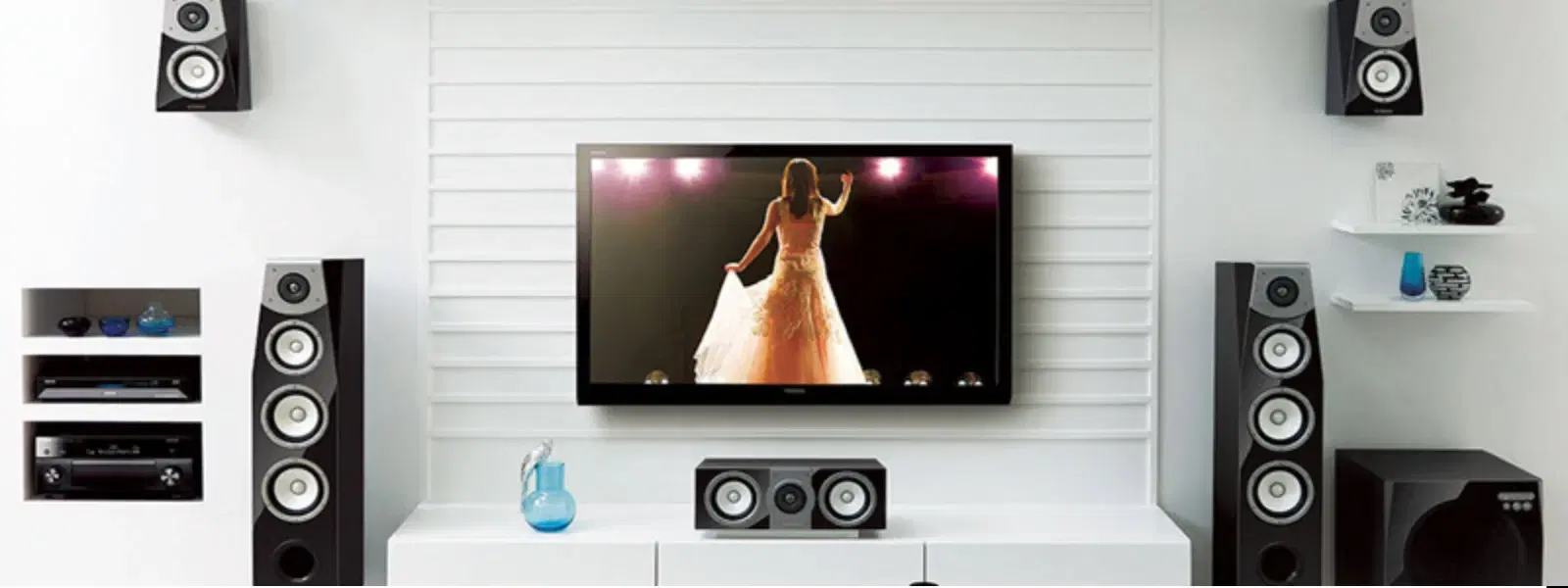
Consumer Electronics
•04 min read
Choosing the right TV can feel like navigating a maze of technical jargon. Terms like QLED and OLED often leave consumers wondering which display technology is best for their viewing experience. In this post, we explore the full forms of QLED and OLED, break down their differences, and answer some frequently asked questions to help you make an informed choice regarding your next TV purchase.
QLED stands for Quantum-dot Light Emitting Diode. This innovative technology utilises quantum dots to enhance colour performance and improve brightness. QLED technology explained in simple terms means that the display boasts vibrant hues and striking luminosity, making it a popular choice for those who enjoy watching in well-lit rooms.
OLED stands for Organic Light Emitting Diode. In this type of display, each pixel is made of organic compounds that emit light independently. This unique feature enables OLED displays to achieve perfect black levels and infinite contrast, delivering a cinematic viewing experience beloved by many for its superior contrast and a wide array of OLED display features.
When it comes to the underlying technology, OLED panels utilise self-emissive pixels, allowing them to produce perfect blacks without any backlighting interference. In contrast, QLEDs depend on an LCD base enhanced with quantum dots, which gives them the edge in terms of brightness and vividness even under bright lighting conditions.
In terms of image quality, the difference between QLED vs OLED full form implementations lies in their strengths. OLED excels with infinite contrast and perfect black levels, creating immersive visuals for dark room movie watching experiences. On the other hand, QLED TVs shine with peak brightness that makes images pop, ensuring that vibrant colours are maintained even in bright environments.
There is a trade-off in durability between the two technologies. OLED TVs might face issues such as image retention or burn-in if static content is displayed for prolonged periods. Meanwhile, QLED panels are generally more robust, offering greater resistance against burn-in while maintaining their performance over time.
QLED panels offer several advantages. Their higher brightness levels make them suitable for well-lit rooms and daylight viewing. Additionally, they come in a wider variety of sizes and price points, which appeals to a broad audience. The robustness of QLED displays means they are less prone to issues such as burn-in, making them a reliable choice over the long term.
OLED screens are lauded for their ability to produce perfect blacks and infinite contrast. This results in breathtaking visuals, particularly in darker settings. With wider viewing angles and minimal colour distortion, OLED is ideal for sharing high-quality viewing experiences with family or friends. Their faster response times also cater well to gaming enthusiasts and those seeking smooth on-screen action.
Choosing between QLED and OLED depends largely on your viewing habits, ambient room lighting, and your budget. If you frequently watch TV in a bright room or are looking for a more budget-friendly option, QLED might be more appealing with its brilliant brightness and durable design. However, if you prioritise cinematic quality and wide viewing angles, OLED stands out as the ideal choice.
For gaming, OLED offers faster refresh rates and lower input lag, delivering a responsive experience that many gamers appreciate. However, QLED technology has its own edge with enhanced brightness and HDR advantages that create immersive visual effects during gameplay.
If you love a cinematic experience, especially in a dark room, OLED TVs are hard to beat due to their unparalleled black levels and contrast. Conversely, QLED televisions excel in bright-room settings, making them a natural choice for sports enthusiasts or those who prefer enjoying vibrant, dynamic visuals in any lighting environment.
Considering long-term performance, QLEDs generally take the lead with durability and resistance to burn-in, ensuring a longer lifespan with minimal upkeep. OLEDs, while superior in contrast performance, require mindfulness to avoid static imagery that could lead to burn-in over time. It’s a balance of prioritising picture quality versus long-term maintenance needs.
Insight Corner: Did You Know?
Did you know that QLED TVs can achieve peak brightness levels that are up to 50% higher than OLED TVs? This makes them especially ideal for viewing in bright living spaces or under direct sunlight.
QLED stands for Quantum-dot Light Emitting Diode, while OLED stands for Organic Light Emitting Diode.
OLED is better for gaming due to its faster response times, lower input lag, and superior contrast.
Yes, OLED TVs can experience burn-in if static images are displayed for prolonged periods. However, most modern OLED TVs include features to minimise this risk.
Yes, QLED TVs are brighter than OLED TVs, making them better suited for well-lit rooms.
Generally, QLED TVs offer a wider range of price points, including more budget-friendly options compared to OLED TVs.
To summarise, QLED and OLED represent two distinct technologies each with their own set of strengths. QLED excels in brightness, durability and affordability, making it highly attractive for everyday viewing in diverse lighting conditions. On the other hand, OLED offers unbeatable contrast, impeccable black levels and superior viewing angles—ideal for those who prioritise a cinematic experience. As you weigh the QLED vs OLED full form considerations and delve into features such as QLED technology explained and OLED display features, it is essential to align your choice with your lifestyle, viewing habits, and budget. Enjoy a more connected, seamless shopping experience and earn NeuCoins rewards when exploring options on Tata Neu, a platform celebrated for its innovative approach and trusted service.